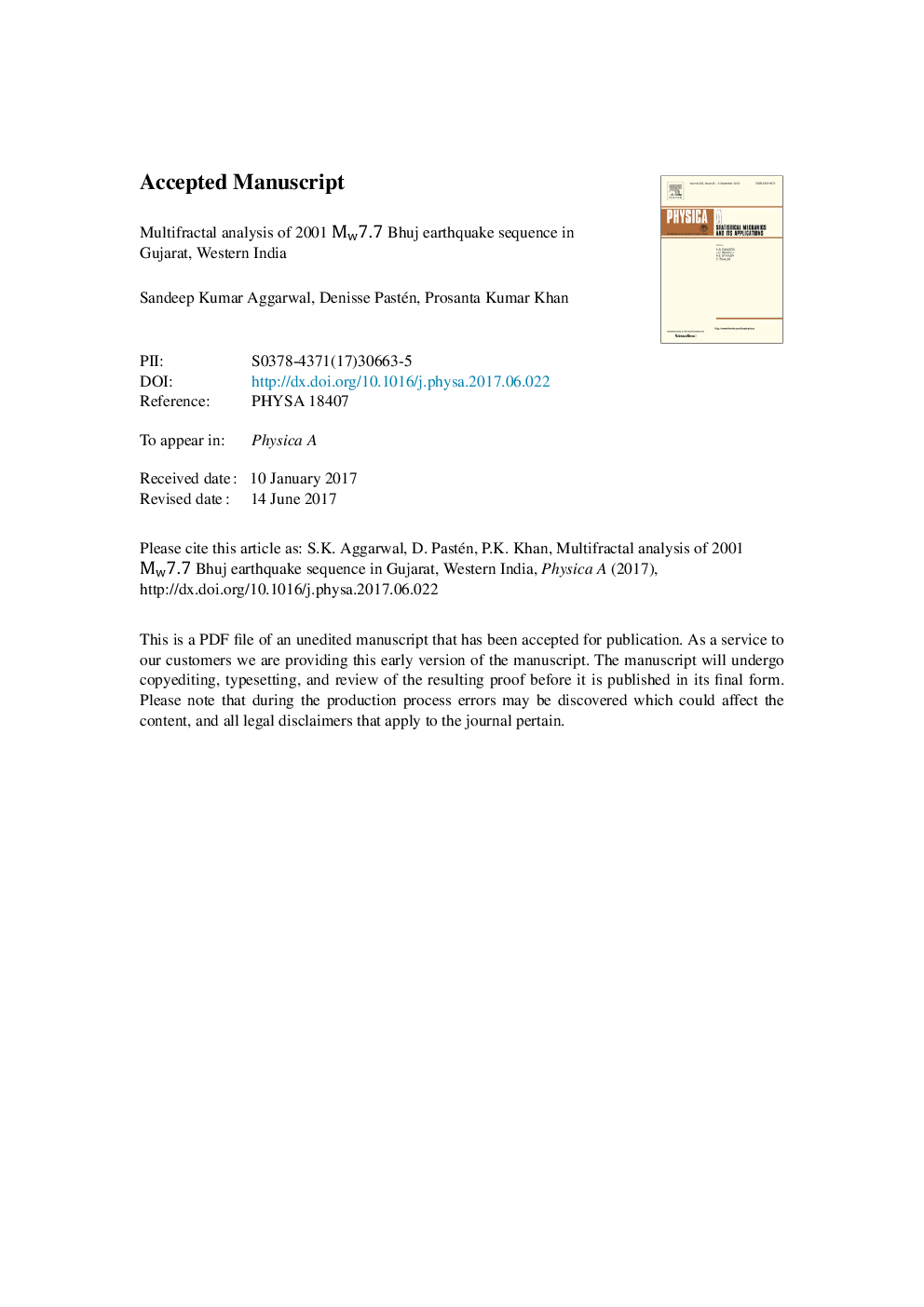| Article ID | Journal | Published Year | Pages | File Type |
|---|---|---|---|---|
| 5102521 | Physica A: Statistical Mechanics and its Applications | 2017 | 30 Pages |
Abstract
The 2001 Mw7.7 Bhuj mainshock seismic sequence in the Kachchh area, occurring during 2001 to 2012, has been analyzed using mono-fractal and multi-fractal dimension spectrum analysis technique. This region was characterized by frequent moderate shocks of Mwâ¥5.0 for more than a decade since the occurrence of 2001 Bhuj earthquake. The present study is therefore important for precursory analysis using this sequence. The selected long-sequence has been investigated first time for completeness magnitude Mc 3.0 using the maximum curvature method. Multi-fractal Dq spectrum (Dqâ¼q) analysis was carried out using effective window-length of 200 earthquakes with a moving window of 20 events overlapped by 180 events. The robustness of the analysis has been tested by considering the magnitude completeness correction term of 0.2 to Mc 3.0 as Mc 3.2 and we have tested the error in the calculus of Dq for each magnitude threshold. On the other hand, the stability of the analysis has been investigated down to the minimum magnitude of Mwâ¥2.6 in the sequence. The analysis shows the multi-fractal dimension spectrum Dq decreases with increasing of clustering of events with time before a moderate magnitude earthquake in the sequence, which alternatively accounts for non-randomness in the spatial distribution of epicenters and its self-organized criticality. Similar behavior is ubiquitous elsewhere around the globe, and warns for proximity of a damaging seismic event in an area. OS: Please confirm math roman or italics in abs.
Related Topics
Physical Sciences and Engineering
Mathematics
Mathematical Physics
Authors
Sandeep Kumar Aggarwal, Denisse Pastén, Prosanta Kumar Khan,
